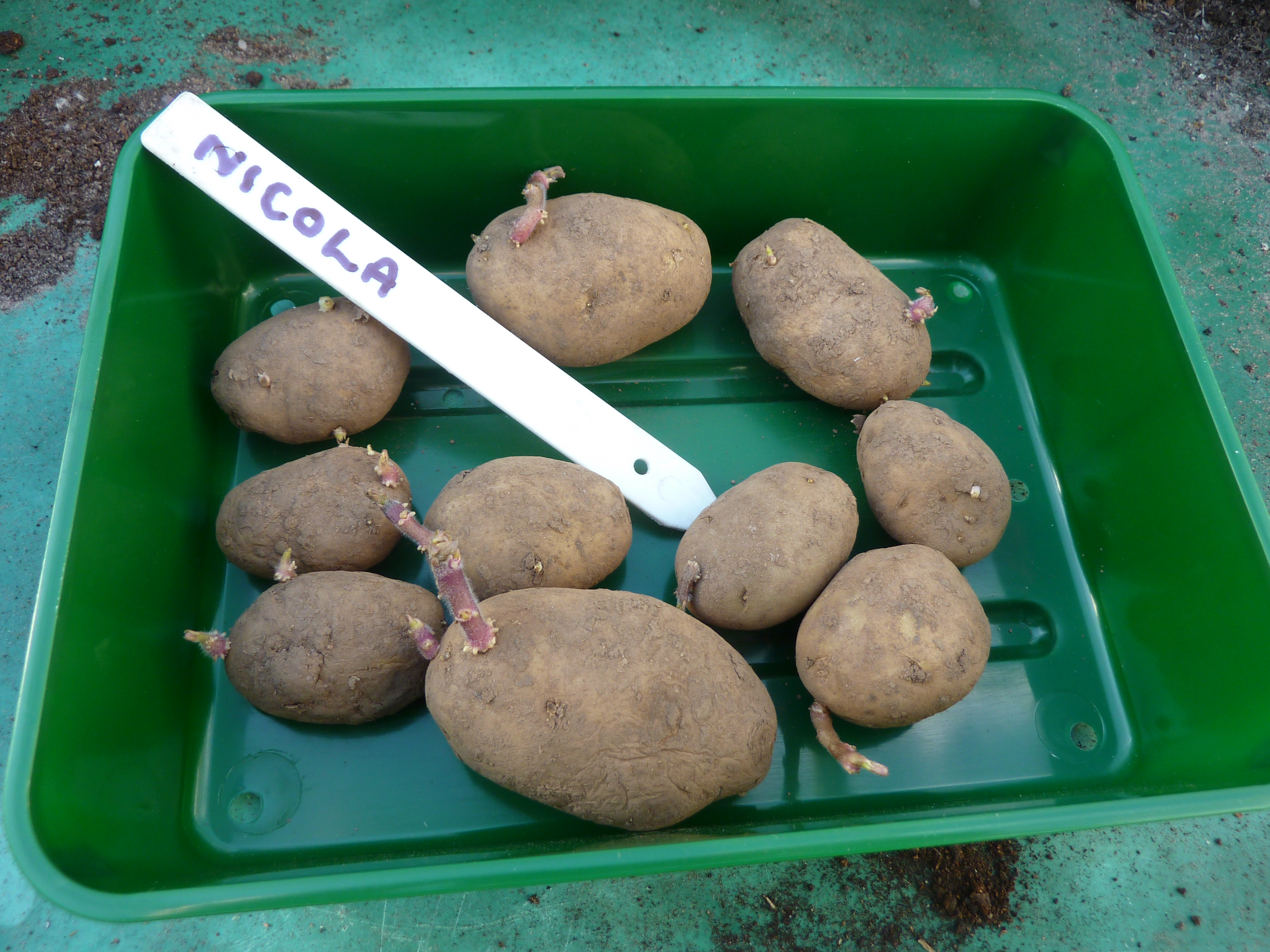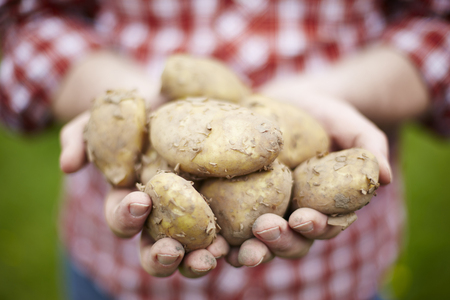Chitting potatoes is one of the year’s easiest jobs. It simply involves encouraging your seed potatoes to send out sprouts (chits).
Seed potatoes can be purchased from January onwards, if not before. Always buy certified virus-free tubers. It is unwise to use tubers you have saved from a previous crop as these can be diseased. Using ordinary potatoes from the supermarket is also ill advised as they are often treated to prevent shooting. This means they will not produce a good crop. The online catalogues are awash with dozens of varieties both new and tried and tested.
Chitting can commence in late January in warmer parts of the U.K and in February in cooler areas. The tubers will have an end which has more eyes (the rose end). They should be placed into an egg box if available or a seed tray will be just as suitable. The end with the eyes should face upwards. Each tray should be labelled with the variety of potato.

Put the trays in a cool but frost free place in good light but not direct sunlight. This can be in a cool greenhouse, conservatory, porch or a garage or shed near a window. A temperature of around fifty degrees Fahrenheit or ten degrees centigrade is ideal. Avoid extreme heat. The tubers will produce short and stubby shoots which should be green or purple in colour. If they produce long white shoots which are brittle then you have kept them too dark or too warm.
After around six weeks the shoots should reach around one inch or two and a half centimetres. Some say you should rub off all but the strongest three or four shoots as more shoots will produce more potatoes but they will be small. At this stage the tubers are ready to plant.
Chitting will get the tubers off to a faster start and produce a heavier yield. They are ready to harvest a week or two earlier than if left unchitted, before the risk of blight is increased.
Mark Snelling.
All images copyright Gardenforpleasure.co.uk
You may also be interested in our blog post about growing potatoes in bags

